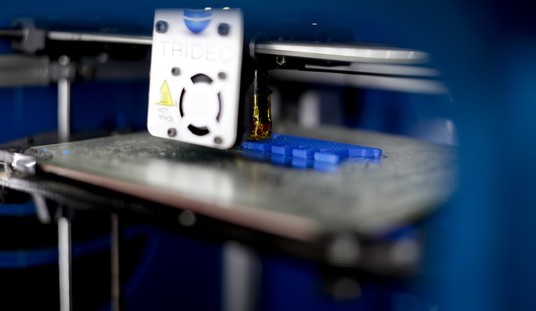When I took the one-day Sentinel Concepts Practical Shotgun class at the Alliance Police Training facility this past Saturday, we spent the first part of our range time developing an appreciation for how our shotguns patterned with buckshot.

After patterning our shotguns, it was time to “do work.”
Shotguns are unparalleled at close range, and according to Steve Fisher, he’s not been able to find a single documented instance in the United States of a bad guy taking more than two center mass hits from a 12-gauge shotgun loaded with buckshot inside a home.
None.
The fight-stopping power of a shotgun does come at a price, however; the 18.5″ cylinder-bore guns preferred for this kind of work can be violent on both ends, and are constantly demanding more shells.
One of the first things Fisher had us learn was how to mitigate a shotgun’s recoil.
We all know—or have been—the person given the advice to pull the shotgun tightly into your shoulder to absorb recoil.
It was the way I was taught to shoot shotguns, and what I did growing up hunting whitetails with buckshot in North Carolina’s swamps.
On those very successful trips where I might fire a five-round box or two of shells, I’d sport a nasty purple and yellow bruise for days afterward. The same thing would happen after firing boxes of birdshot at doves or clays over the course of a day. The bruising and abrasions were simply considered a price of during business.
All too often, two days later I’d end up looking something like this.

But there’s a much better way.
The “trick” to recoil mitigation is an astoundingly simple one, which Fisher calls “stretching” the shotgun.
It’s so simple, that it verges upon being genius.

“Stretching” is a simple “push-pull” that is done in the split-second before the shot is fired.
The trigger-side hand pulls the shotgun into the shoulder with just enough force to hold the shotgun in place. This hand exerts constant reward pressure, and this “pull” keeps the shotgun mounted on your shoulder.
The support-side hand is in position to manipulate the slide (on a pump gun). Right before you break your shot, you go from merely holding the foreend to pushing it away as if you are trying to stretch the receiver.
When the shot breaks, the stretching motion tremendously mitigates the recoil.
I know, because I’ve now gone through two classes with Fisher, and the “damage” I’ve suffered to my shoulder from firing 300+ rounds of 12-gauge shells in this most recent class is nonexistent. This is what I looked like on Monday, after shooting 300+ rounds of bird and buckshot.

Yes, I’m aware of the fact that this might not be the best explanation of how stretching a shotgun works, and I’m probably not doing the best job of explaining it. I’m experienced enough now with the technique (500+ rounds) that I can do it, but I’m still not expert enough to have mastered it enough to teach the theory all that well. If you want it explained right, book the class.
After learning to mitigate recoil with the stretching technique, it was time to start putting it in practice.
We transitioned from the buckshot we used in patterning our shotguns to birdshot so that we could work on the push-pull “streching” technique, which we’d learn to make our own over the course of the day.
After trying that out with a number of shots, it was time to start getting into the most stress-inducing part of using a defensive shotgun; firing it, and keeping it fed.
Yes, we’ve established the fact that even the most hopped-up junkie isn’t going to be a threat after two solid hits, but there is the simple fact of the matter than in the real world, that threat isn’t going to be standing still, he’s possibly going to be moving to find cover, and last but not least, he might not be alone.
We have to constantly keep putting more ammunition in the shotgun… and there’s an art to that as well.
Loading a shotgun requires more time, attention, and dexterity than loading any magazine-fed rifle or pistol, where you hit the magazine release, pull the magazine out or let it drop away, seat a new, pre-loaded magazine in place, hit the bolt release (or rack the slide) and go back to work.
We first worked on doing emergency reloads, which is throwing a round into the open chamber of a completely empty shotgun. Depending on how your shotgun is set up, your body mechanics, and personal preferences, you can choose to go over the top of the receiver, or come in order the bottom.

The Nighthawk Custom Remington 870 I was using for the class (pictured above) was equipped with both iron sights and a Trijicon RMR, which encourages some shooters to reach under the gun and throw shells up into the ejection port. I tried it both ways, but what worked best for me was to come over the top. Even if I fumbled and missed cleanly hitting the port (you’d be amazed at what a little stress can do), I’d still have the shell trapped against the receiver, and could drag it up and in without losing control of the round.
After doing some drills trying out the emergency reload, it was time to start incorporating the magazine tube reload. After showing us a few different ways to do this and giving us the pros and cons of the varying techniques, it was time to put it all together in the shotgun meatgrinder that is the drill called “Rolling Thunder.”
It’s simple enough… in theory.
A designated shooter on one end of the line would do an emergency load directly into the chamber through the ejection port, then chamber the round and fire a shot on the steel plate ten yards ahead of each of us.
The next closest shooter would do the same thing after the shooter ahead of him fired, all the way down the line.
But wait! There’s more…
Once the first shooter fired his emergency load, he would load a shell into his magazine, and wait for his turn to go again. When it was his turn again, he’d do an emergency reload, fire that round, and then the round in the tube.
The rest of the line would follow suit, and each and every time, an additional cartridge was loaded into the magazine tube.
So it looked like this:
Emergency reload, shoot.
Tube feed one, emergency reload, shoot two.
Tube feed two, emergency reload, shoot three.
Tube feed three, emergency reload, shoot four.
Tube feed four, emergency reload, shoot five.
Tube feed five, emergency reload, shoot six.
This was going on with eleven shooters, constantly loading and firing. After a few rounds, and the constant process of loading and firing ot was difficult to know when you were supposed to shoot amid the din, or where you were in your shot string.
As if that wasn’t enough fun, Steve would change up the drill, starting from both outside positions working towards the middle, or taking things from the middle shooter out, cutting our reload time in half.
As you might imagine, the stress on shooters and guns was intense.
My delicate little writer thumb soon started to go numb on my support hand, and it felt like it had a mind of its own. Loading the tube magazine quickly became a nightmare.
Some of the shotguns also began to fail… some more spectacularly than others.

And we did it again, and again and again, so that when we went home after the class, we’d be able to replicate it on our home ranges and get smoother, faster, and better.
The constant loading, feeding, and firing of “Rolling Thunder” was done for a specific purpose. It stressed shooters and guns to the breaking point in a safe environment, while giving us the tools we needed to get better.
Maybe you should consider giving it a try.








Join the conversation as a VIP Member